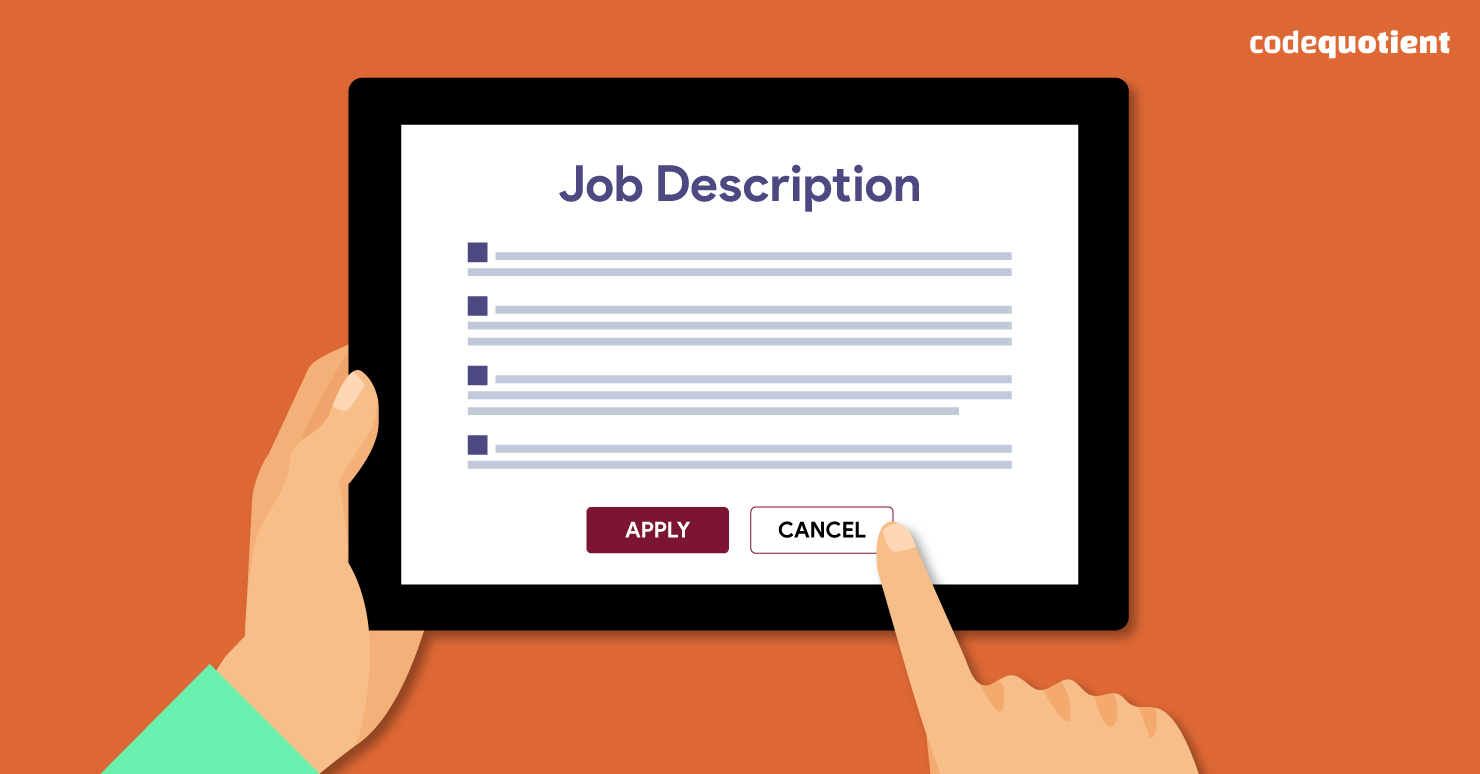Most recruiters focus on the interview and technical assessment rounds during tech recruitment. But many emphasise less on perfecting job descriptions. Job descriptions may seem simple, but they can be extremely tricky.
The job description can be a powerful tool for attracting the ideal candidate, but it can also cause problems in the recruitment process and damage the company’s reputation. The job description influences many aspects of the hiring process, such as the quality and quantity of applicants and the duration of the selection process.
Therefore, job descriptions shouldn’t be taken lightly.
Why Job Descriptions are Important in Tech Recruitment
Let’s take a look at how job descriptions can make or break your tech recruitment efforts as a software engineer:
1. Filter Out Unqualified Candidates
Clearly, laying down the duties and responsibilities in the job description helps filter out unqualified candidates from the beginning.
Most people who don’t have the skill sets and experiences mentioned in the job description won’t apply for the job in the first place. Instead, they’ll be automatically intimidated by the profile’s demand.
Hence, you don’t have to go through stacks of resumes to find those who fit the description. A well-enough job description will ensure it effectively conveys the job’s needs. This also helps save many resources you would have had to spend filtering out unqualified software developers.
2. Set the Right Expectations for Tech Recruitment
In addition to conveying to candidates clearly what is expected of them, a well-crafted job description helps set the right expectations regarding the duties and responsibilities of tech recruitment from the beginning.
This helps conduct the recruitment process smoothly and enables a new employee to transition into a new workspace effortlessly.
3. Helps You Structure the Interviews
Structured interviews tend to yield better results than unstructured ones, and job descriptions serve as an excellent tool for structuring them. But again, this is because job descriptions are the foundation for interviews.
An appropriately crafted job description will remind you of the skills you need to test candidates during the hiring process, helping you carefully assess the candidate.
4. Avoid Wrong Hire
How do you decide whether a candidate is perfect for a particular tech recruitment? You match the candidate’s skills to those mentioned in the job ad, right?
However, if the job ad’s description is inaccurate, you’ll most likely struggle to hire the right candidate. This results in a loss of a lot of resources.
5. Might Cause Delays
Wrong job descriptions can result in massive delays in the recruitment process. For instance, imagine you put out a job ad for a software engineering role and listed the details in the job description. Many candidates have applied for the job, and you have also set the dates for the interviews.
This is when you realise that the job description doesn’t list ‘proficiency in Python’ as a prerequisite. So now you’ll have to create a new job ad and go through the whole process again. You’ll also have to convey why they are getting rejected after being shortlisted, which can negatively affect the company’s image.
6. Might Miss Out on the Right Candidate
With the competition peaking in tech recruitment currently, candidates have a lot of companies to choose from. So, depending on the job descriptions, whichever company deems fit their qualifications and experience, the candidates will apply to those companies.
So, if you’ve overstated or understated the key skills and qualifications required for a role, a candidate might not even apply for the job. Even though they might have been perfect for the role.
7. Employee Turnover
A wrong or incomplete job description can lead to a candidate quitting soon after joining the company. Every candidate has a certain goal of where they want to reach in their career and takes up jobs that align with their goal.
However, after joining, if they realize the duties and responsibilities differ from what they interviewed for, it’ll lead to dissatisfaction for the candidates. If the difference is minor, then the candidate might still decide to stay; however, if there is a significant difference, then the candidate will quit right away.
Now that you’ve got an idea about how job descriptions can make or break recruitment efforts, we hope you spend time carefully crafting one.
Elements of a Good Job Description
A good tech recruitment job description should include the following:
- A job title must be in 1-4 words
- Job purpose, reflecting the company’s passion behind the role
- The duties and responsibilities are stated elaborately
- Qualifications (educational and knowledge required to be eligible)
- Preferred Qualifications (not mandatory but good to have)
- Experience, specifically in years, full or part-time, in past positions
- Skills, knowledge and abilities needed for the role
- Communication skills, problem-solving and other soft skills
- Working conditions at the office
To know in detail how to write a great job description, you can check out our previous blog.
Wrapping up!
At CodeQuotient School of Technology, we help you find top-notch tech talent who can hit the ground running in your tech recruitment. Our elite developers, rather SuperCoders, have undergone over 600 hours of intensive training, allowing them to excel in real-world scenarios from day one.
Through our rigorous screening process, we handpick only the top 1% of candidates, ensuring you onboard individuals with exceptional technical abilities, integrity, and interpersonal skills. Our SuperCoders’ LIVE profiles showcase their verified projects, giving you an in-depth look at their talent and dedication. To know more about it, you can check our page!





